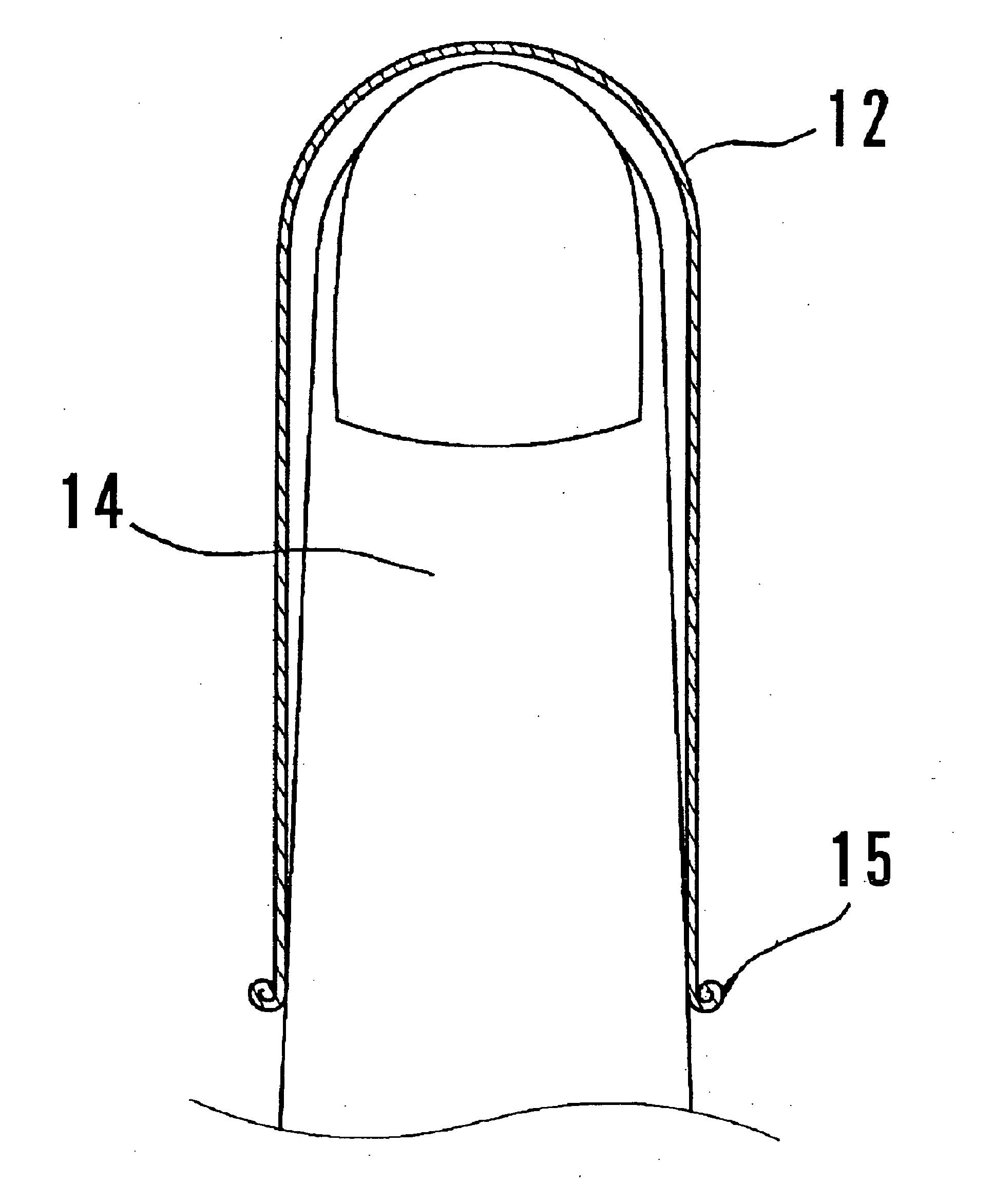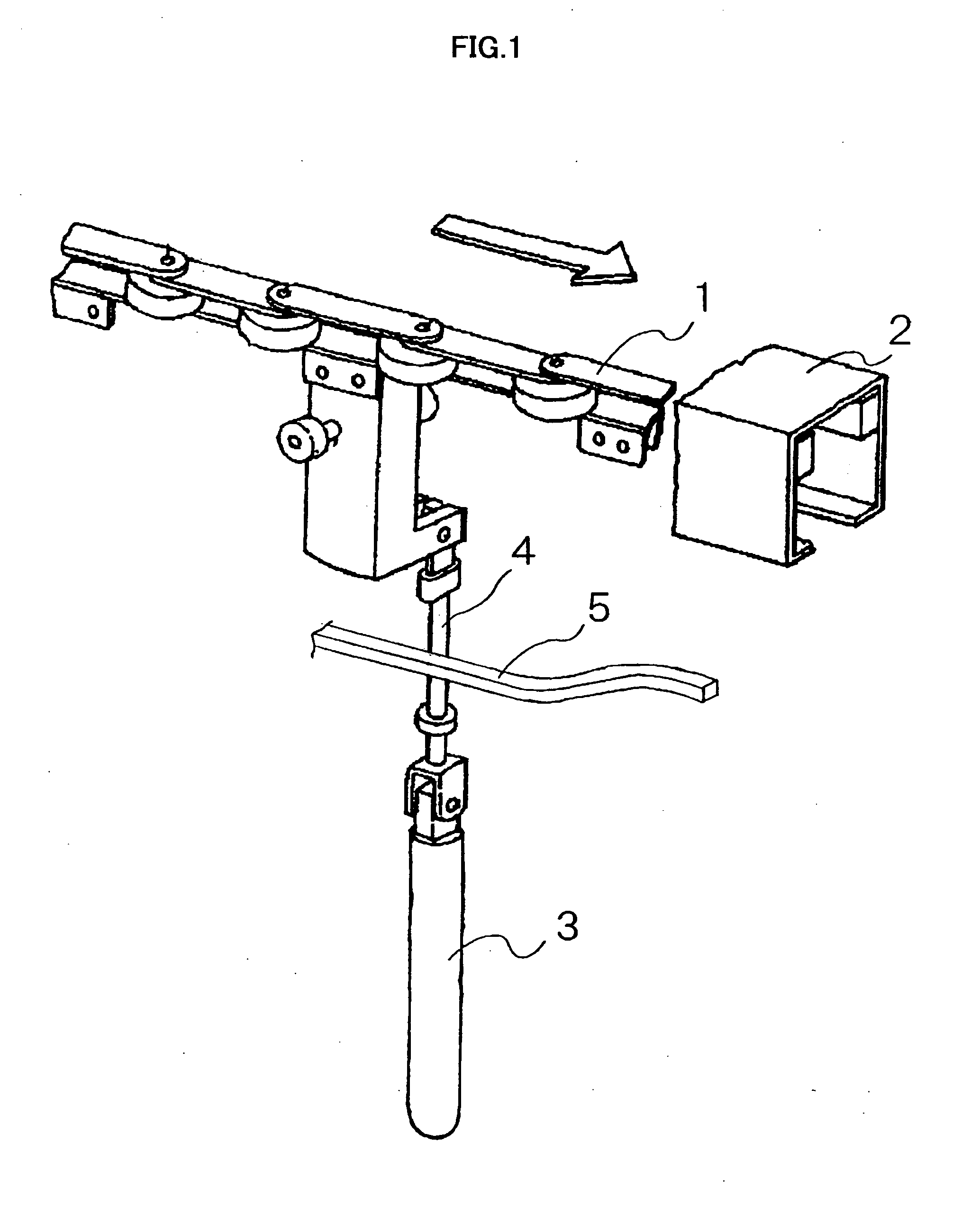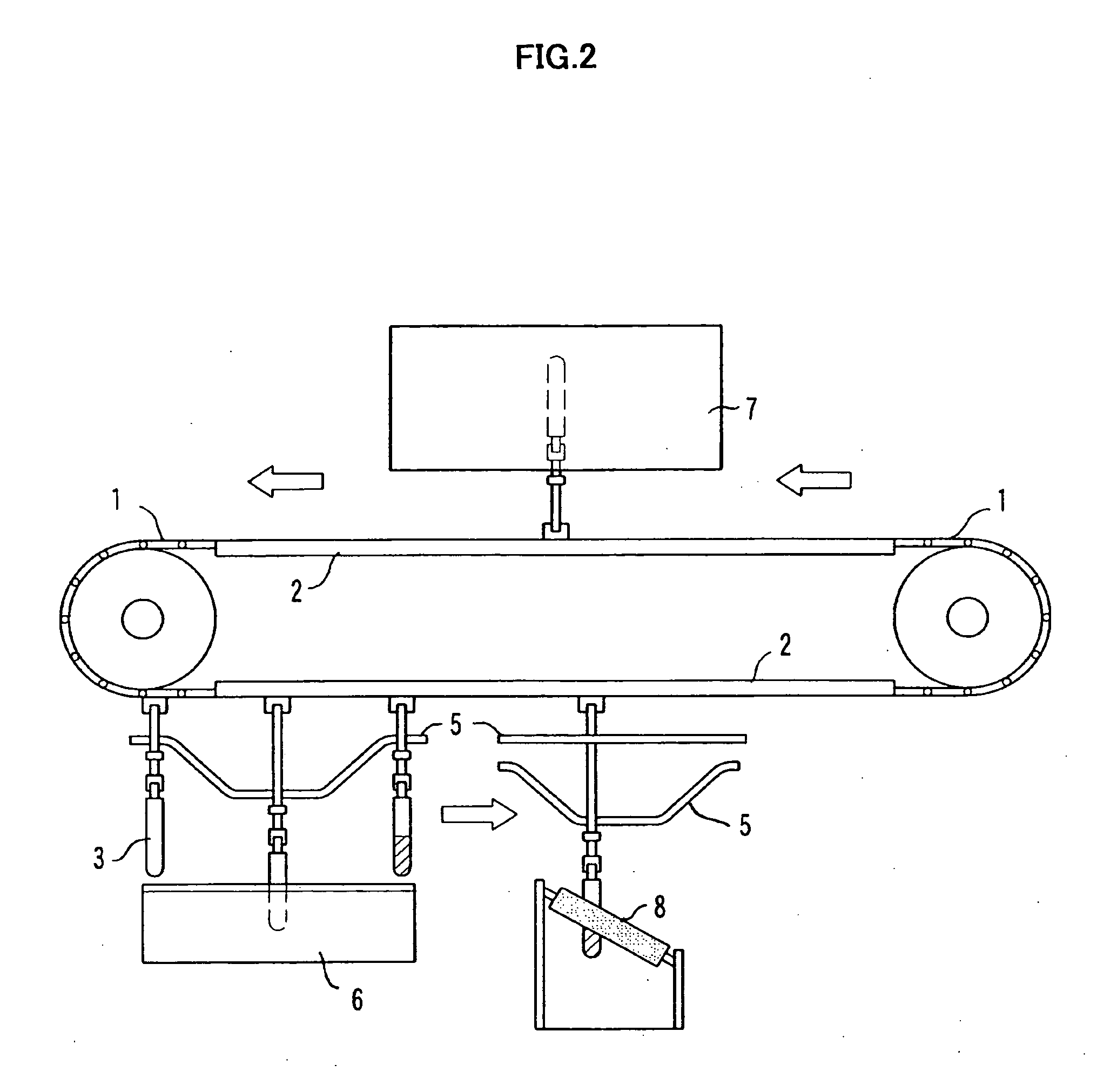Latex products
a technology of latex and non-adhesive coating, applied in the direction of carboxyl rubber coating, transportation and packaging, synthetic resin layered products, etc., can solve the problems of insufficient powder-free product production, still showing residual tackiness, and not always satisfactory, and achieve the effect of reducing the quantity of protein
- Summary
- Abstract
- Description
- Claims
- Application Information
AI Technical Summary
Benefits of technology
Problems solved by technology
Method used
Image
Examples
examples 1 to 13
The natural rubber latex film was prepared from the pre-vulcanized natural rubber latex incorporated with the anionic, hydrophilic polymer, and further with the hydrophilic group sealant, and post-treated for the tackiness test. The result, and the anionic, hydrophilic polymer and hydrophilic group sealant used in each EXAMPLE are given in Table 1. The post-treatment conditions in each EXAMPLE are described below:
(Post-treatment)
The natural rubber latex film prepared was treated by the following steps in the order described below:
Heating→Leaching→Post-vulcanization
In order to evaluate the effects of the post-treatment, the film was post-treated under two different sets of conditions for the heating and leaching steps: (1) heating at 50° C. for 2 minutes and leaching at 70° C. for 3 minutes, and (2) heating at 90° C. for 5 minutes and leaching at 85° C. for 3 minutes in each of EXAMPLES 1 to 5. Post-treatment temperature and treatment time in each EXAMPLE were: Heating Leac...
examples 14 to 21
The pre-vulcanized natural rubber latex was incorporated with the nonionic, hydrophilic polymer, and further with the hydrophilic group sealant. It was formed into the film and post-treated for the tackiness test. The result, and the nonionic, hydrophilic polymer and hydrophilic group sealant used in each EXAMPLE are given in Table 2. The post-treatment conditions in each EXAMPLE are described below:
(Post-treatment)
The natural rubber latex film prepared was treated by the following steps in the order described below:
Heating→Leaching→Post-vulcanization
In order to evaluate the effects of the post-treatment, the film was post-treated under two different sets of conditions for the heating and leaching steps: (1) heating at 50° C. for 2 minutes and leaching at 70° C. for 3 minutes, and (2) heating at 90° C. for 5 minutes and leaching at 85° C. for 3 minutes in each of EXAMPLES 14 to 19. Post-treatment temperature and treatment time in each EXAMPLE were: Heating Leaching Post-vu...
examples 22 to 26
The pre-vulcanized natural rubber latex was incorporated with the cationic or ampholytic, hydrophilic polymer which causes no gelation of the natural rubber latex, and further with the hydrophilic group sealant. It was formed into the film and post-treated for the tackiness test. The result, and the cationic or ampholytic, hydrophilic polymer which causes no gelation of the natural rubber latex and hydrophilic group sealant used in each EXAMPLE are given in Table 3. The post-treatment conditions in each EXAMPLE are described below:
(Post-treatment)
The natural rubber latex film prepared was treated by the following steps in the order described below:
Heating→Leaching→Post-vulcanization
Post-treatment temperature and treatment time in each EXAMPLE were:
Heating Leaching Post-vulcanization (EXAMPLES 22 to 26) 95° C., 5 min. 85° C., 5 min. 110° C., 10 min.
TABLE 3IncorporatedIncorporatedExamplesCationic or ampholytic, hydrophilicquantityHydrophilic group blocking agentquantityTe...
PUM
| Property | Measurement | Unit |
|---|---|---|
| Temperature | aaaaa | aaaaa |
| Temperature | aaaaa | aaaaa |
| Temperature | aaaaa | aaaaa |
Abstract
Description
Claims
Application Information
 Login to View More
Login to View More - R&D
- Intellectual Property
- Life Sciences
- Materials
- Tech Scout
- Unparalleled Data Quality
- Higher Quality Content
- 60% Fewer Hallucinations
Browse by: Latest US Patents, China's latest patents, Technical Efficacy Thesaurus, Application Domain, Technology Topic, Popular Technical Reports.
© 2025 PatSnap. All rights reserved.Legal|Privacy policy|Modern Slavery Act Transparency Statement|Sitemap|About US| Contact US: help@patsnap.com



